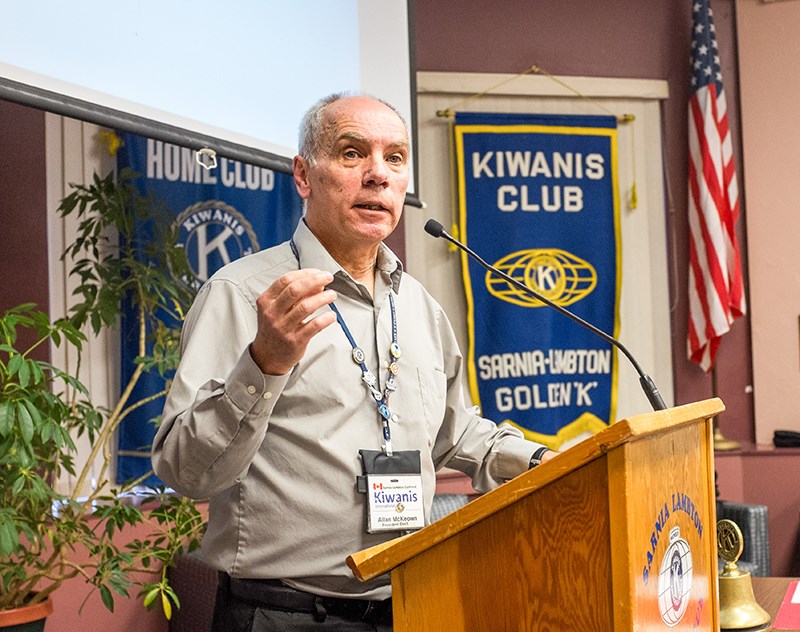Troy Shantz
Allan McKeown’s early interest in biological warfare grew even stronger after he was on the receiving end of what might have been an attack.
In 1977 the Sarnia man contracted the Russian flu, which some experts have argued was the result of a laboratory accident that occurred in the former Soviet Union.
The H1N1 strain spread rapidly across the globe and is regarded as the last great pandemic of the 20th century.
“It kind of piqued my interest even more because so many people around the world were victims of this either accidental release or intentional release,” said McKeown, a retired manager of clinical microbiology services at the former St. Joseph’s Hospital in Sarnia.
Speaking at a recent Kiwanis Golden K Club meeting, McKeown painted an alarming picture of viruses and bacteria harmful to people, crops or livestock intentionally released over the past 100 years.
Early examples of biological warfare were used in conflicts between Japan and China prior to the Second World War, and since then a number of countries have developed and tested their own stockpiles, he said.
Throughout the 1950s the U.S. government explored ways to weaponize germs. In once instance, a biological agent was place in the scuba gear of Fidel Castro in an attempt to assassinate the Cuban dictator, said McKeown, who is also a lay chaplain with the Unitarian Fellowship of Sarnia and Port Huron.
The U.S. has also tested biological weapons on its own citizens — and even Canadians.
McKeown described how the U.S. Navy released a bacterium called Serratia marcescens as a simulant on the unsuspecting citizens in San Francisco, New York City and Winnipeg, to gauge the population's susceptibility to a more deadly biological attack.
In Winnipeg, McKeown said, it was dumped by aircraft onto the city.
The Iraqi military had its own bio-warfare systems before Operations Desert Storm in 1991, and the threat resurfaced after 9/11 when it was widely reported anthrax had been sent via mail to politicians and media outlets.
“I think anybody involved in microbiology is kind of horrified and fascinated with this topic at the same time,” McKeown said.
Biological warfare was briefly addressed in the Geneva Convention of 1925 and updated in 1975 with the creation of the Biological Weapons Convention.
The most acutely lethal toxin known to humankind is botulinum, with one gram of it potent enough to kill 1.5 million people, McKeown said.
“Hopefully, we'll never have to deal with this type of disaster.”
Yet, a diluted version is commonly used to cosmetically reduce wrinkles, he added, but it’s better known by its brand name Botox.
McKeown was one of about 50 people expected to speak to Golden “K members over the next year, said co-ordinator John Ward.
“Basically, anything that we think is of general interest to the group that is not a direct solicitation,” he said.
“Sarnia is full of people of interest.”
